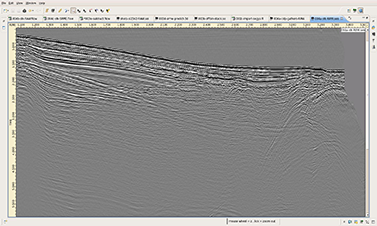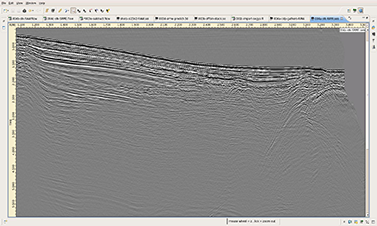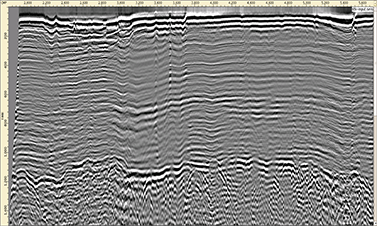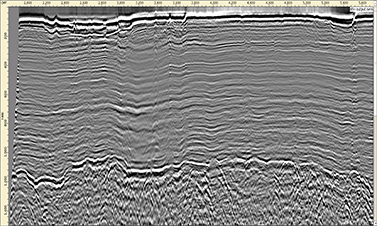Services
Our goal is to deliver the best geophysical service to Oil & Gas Companies,
using ultimate technology and artisan’s dedication.
TIME PROCESSING / Multiple Attenuation
Surface-related Multiple Elimination (SRME)
SRME is a powerful tool to remove all the multiple energy derived from the air/water interface, including those energies that techniques such as Radon and Tau-P fail to address.
Since the method doesn’t require a velocity field, the source signature, the surface reflectivity or knowledge of the subsurface, it is implemented adaptively resulting in an inversion process where the source and surface reflectivity properties are estimated and where the multiple‐free data equals the inversion residue. It is applied prior to Radon de-multiple, to help improve preliminary velocity analysis.
Its ability to handle all of the energy generated from the free surface helps removing even the most complex diffraction multiples with SRME, and an iterative scheme allows its use in shallow and deep water settings.
Surface-related multiple prediction assumes that two traces can be found at each surface position used to model a multiple: a trace with source at that location and a trace with a receiver at that location. If the source and receiver spacing’s are not equal, then this assumption is clearly violated. This is why different interpolation routines are applied to help generate the dense and regular input grid. De-regularization allows subtraction on raw shot gathers and helps us maintain AVO integrity throughout the process.


Wave Equation Multiple Attenuation (WEMA)
The Wave Equation Multiple Attenuation method predicts long-period multiples generated in the water layer using wave-field extrapolation. These multiples can be either water-bottom multiples or peg-legs.
As depicted in Figure A, water-bottom multiples and source-side peg legs can be predicted by combining two wavefield extrapolation operators. The first one extrapolates the primaries downwards to the water-bottom and the second extrapolates it upwards to the water surface.
In the first iteration (left), the primary energy (red rays) is extrapolated back to the water-bottom. This is achieved by an upward extrapolation to the reflected image of the waterbottom (dashed green line). Then, the energy is propagated upwards from the water-bottom to the water surface (blue rays) by means of a second operator.

Note that in the case of flat water-bottom, both operators are identical. Therefore, they can be combined into one single upward extrapolation from the water surface to a theoretical surface located at two times the water-bottom above the water surface.


References
- Verschuur, D. J., Berkhout, A. J., and Wapenaar, C. P., 1992, Adaptive surface-related multiple elimination: Geophysics, 57, 1166-1177.
- Wiggins, J., 1988, Attenuation of complex water-bottom multiples by wave-equation-based prediction and subtraction: Geophysics, 53, 1527-1539.
